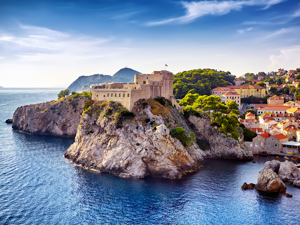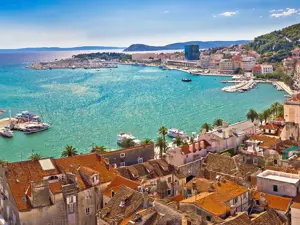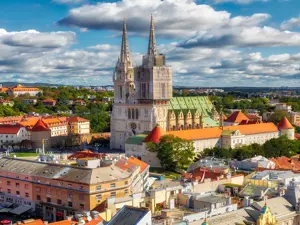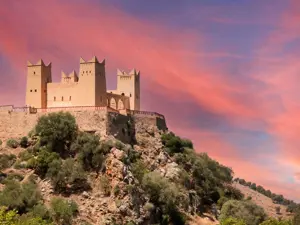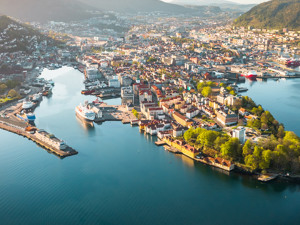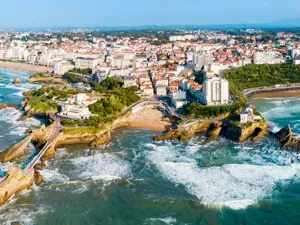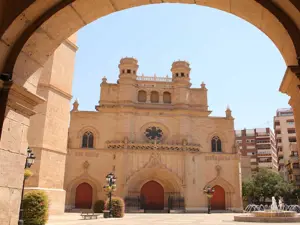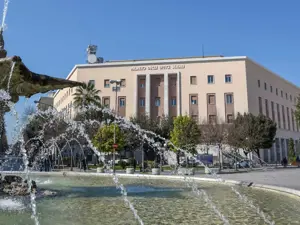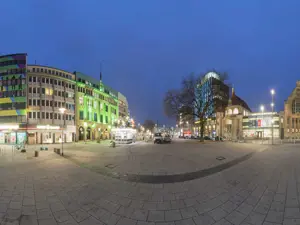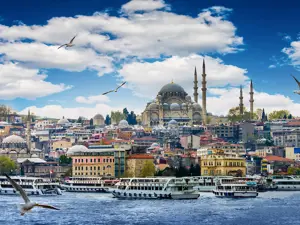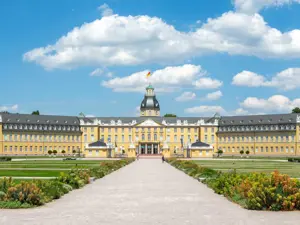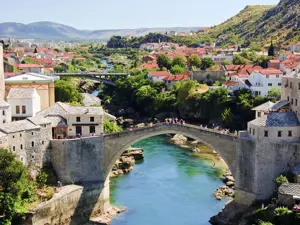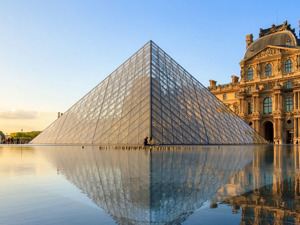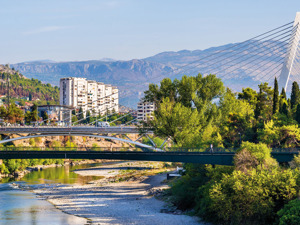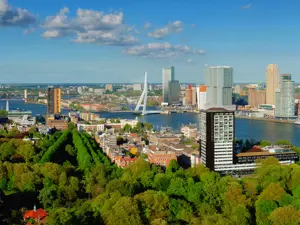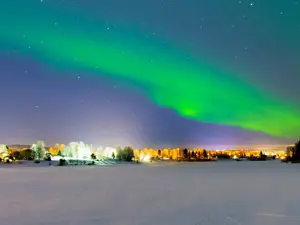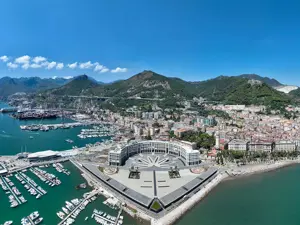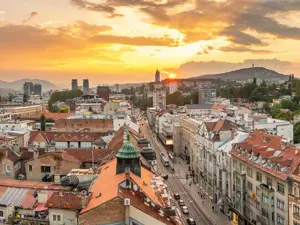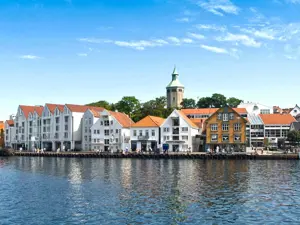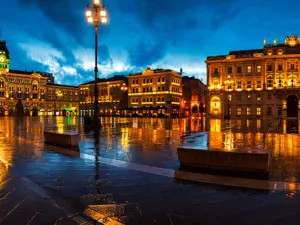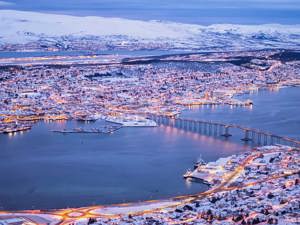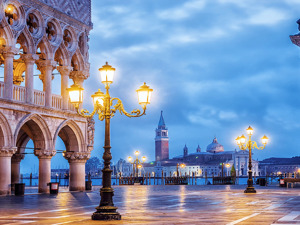A Croatian garden in the Adriatic Sea
The city has always struck a chord with its visitors, due to its location and its lively, cultured and friendly way of life. The city of Zadar still bears the signs of the protection it was given for centuries from the Republic of Venice, from the 11th century. So much so that in the past century the writer Luigi Federzoni referred to it as the "adorable daughter of Venice, with a labyrinth of picturesque streets that manifest much festivity, graciousness and passionate Venetian spirit".
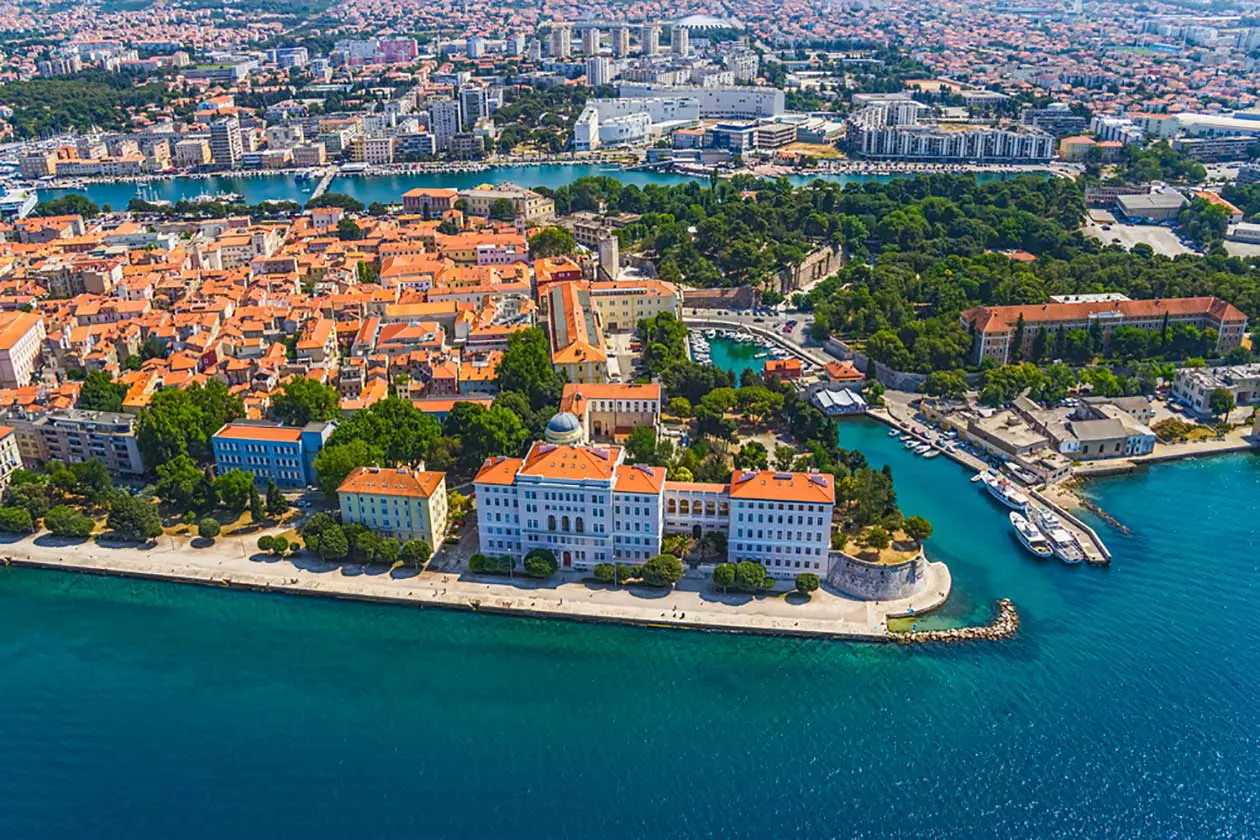
Zadar Copyright © Sisiterscom.com, Shutterstock
Its exceptional position on the Dalmatian coast in Croatia (once an island and today a rectangular peninsula in the Adriatic Sea) and also its magnificent surroundings, make Zadar without doubt a destination to be recommended at any time of the year.
The city walls of Zadar
Its majestic and impregnable city walls, declared a UNESCO World Heritage Site, testify how it once was the largest fortified city in the Republic of Venice.
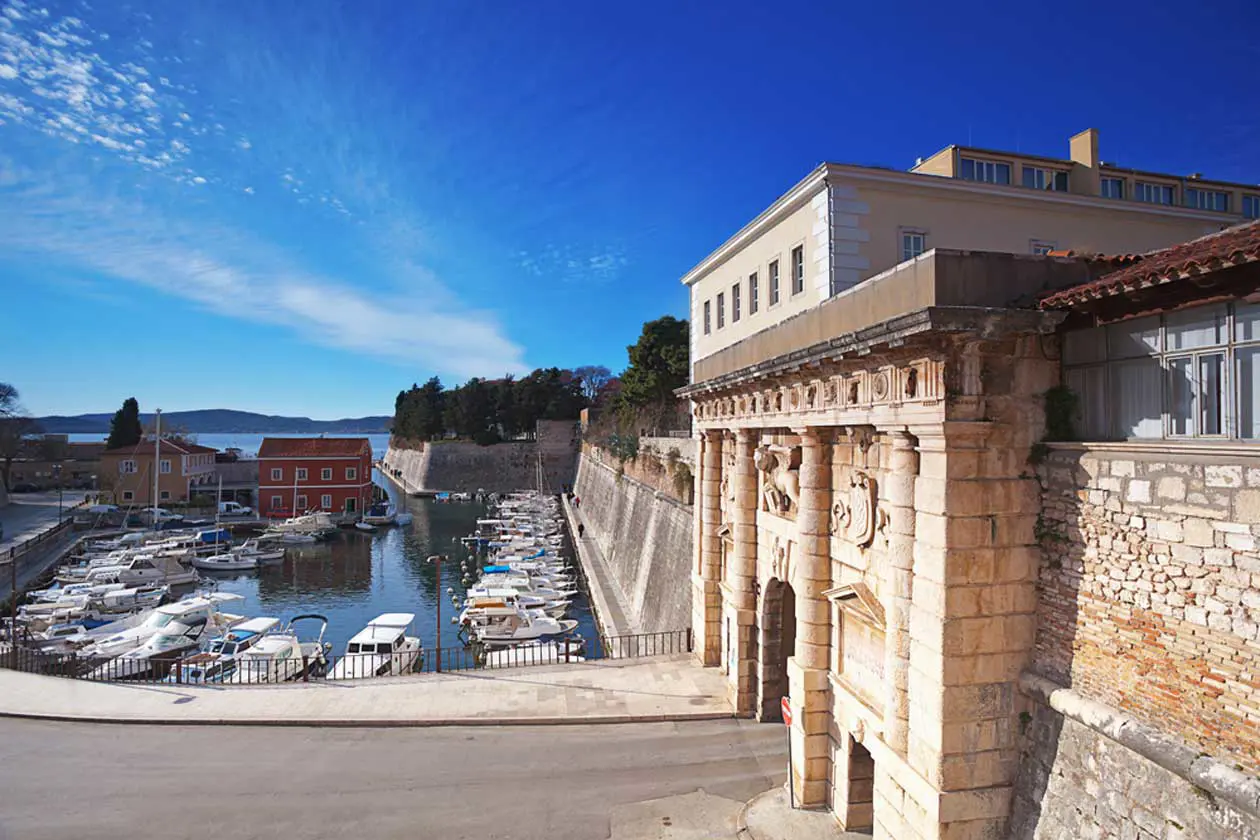
The fortified city walls of Zadar Copyright © Sisiterscom.com, Shutterstock
As soon as visitors enter Zadar, they are captivated by the colours and liveliness of Kalelarga, the most important street and home to many of the city's lively bars and restaurants. These colours accompany the visitor along the waterfront, which offers a view of the intensely blue body of water and the magnificent islands that populate it. At the end of the day, visitors can enjoy what the great director Alfred Hitchcock defined as "the most beautiful sunset in the world" while watching the extraordinary spectacle of the 'Greeting to the Sun', a modern installation that absorbs sunlight during the day, only to release it at night in a playful lightshow, and listening to the music of the 'Sea Organs', which is generated by the waves themselves.
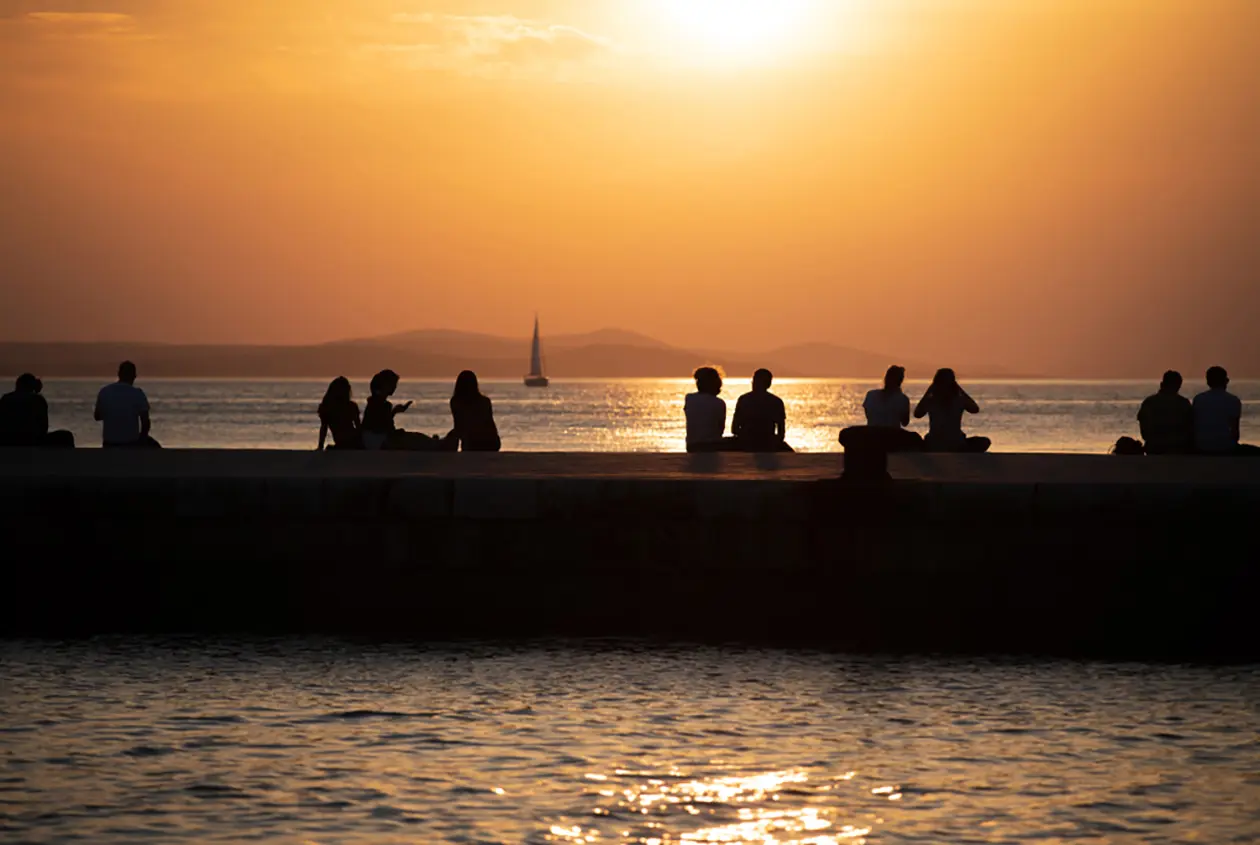
Zadar Copyright © Sisiterscom.com, Shutterstock
In order to embrace the romantic atmosphere, it is advisable to visit Zadar on the water. There are numerous boats, which are expertly guided by the so-called barkajoli, the traditional boatmen of the city, similar to gondoliers, courteous experts who can take tourists to the most evocative and hidden corners of the island.
The places of worship in Zadar
Another landmark is the monumental construction of the Church of St. Donatus, the most impressive in Croatia, but there are however many other magnificent places of worship that are a testament to its ancient and artistic past.
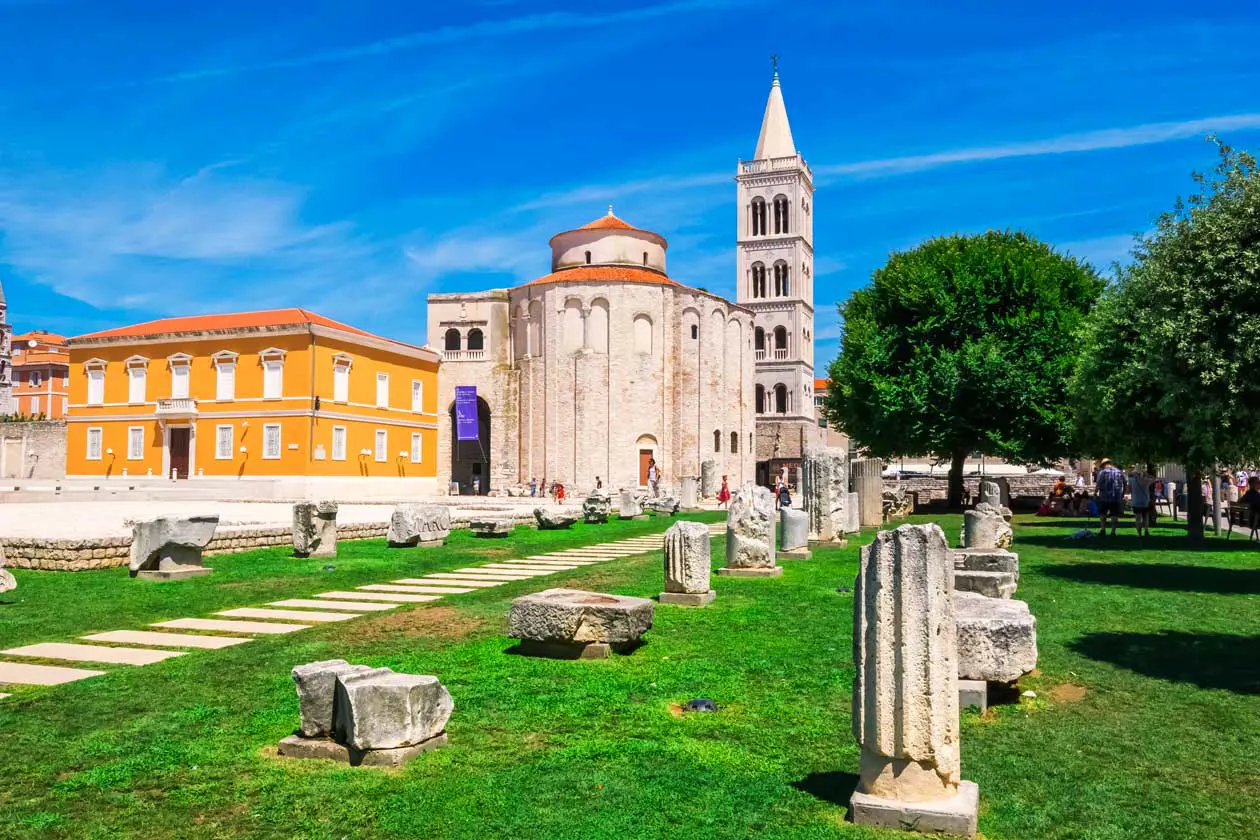
Church of St. Donatus, Zadar Copyright © Sisiterscom.com, Depositphotos
The most beautiful places of worship in Zadar to visit are:
the Romanesque and oldest church in Dalmatia, the Cathedral of St. Anastasia, one of the patron saints of the city;
the Church of St. Simeon, with its precious sarcophagus containing the relics of the saint;
the Church and the Convent of St. Mary, with a remarkable exhibition of holy works;
the Church and Monastery of St. Francis, and the Church of St. Chrysogonus.
Among the vestiges of the past is the Roman Forum, the large public square built between the 1st century BC and 3rd century AD. The Land Gate, designed by the famous Venetian architect Michele Sanmicheli, stands to testify once again the close relationship the city had with the Republic of Venice.
Once the main entrance of the city, it features on its central arch Saint Chrysogonus on horseback, the city’s crest, dominated by the lion of St. Mark, the symbol of the Republic of Venice.
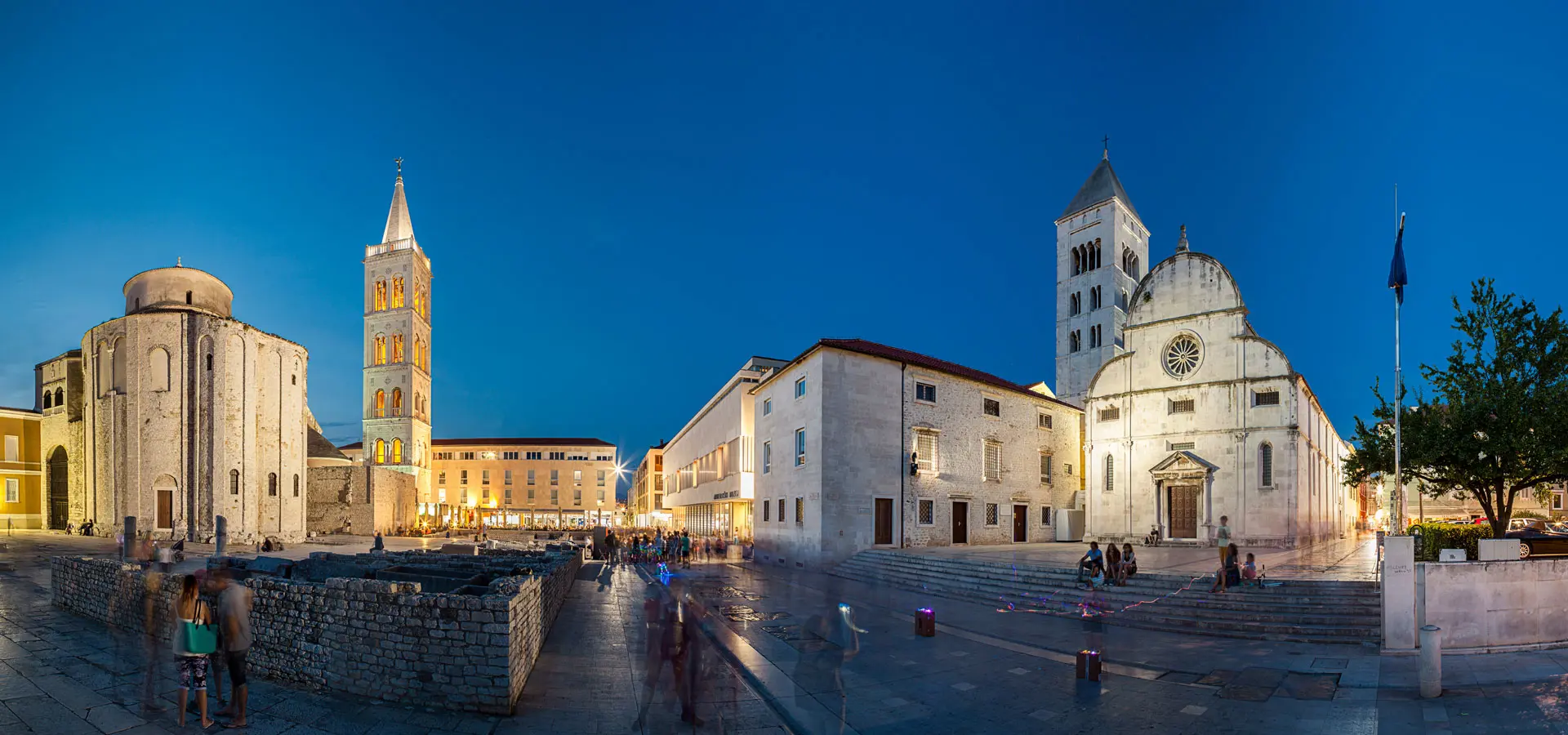
Zadar Copyright © Sisiterscom.com, Shutterstock
Also dating back to the time of Venetian domination is the Captain’s Tower, a rare example of a medieval fortification where both the Prince and the Captain, who governed the city, lived. Even the Arsenal, significant in Zadar’s seafaring past, built by the Republic of Venice, deserves a visit: once a place for manufacturing and supplying weapons and warships, today it is a well-equipped venue for concerts, events, exhibitions and conferences, a truly relaxing space not only for culture lovers, but also for Mediterranean cuisine and wine.
Zadar's specialties
This city offers excellent local wines such as Riesling, Malvasia and especially the famous Maraschino of Zadar, a delicious nectar derived from the cherries of the area. Wine is also an ingredient in some traditional recipes, such as spicy beef cooked in wine, and there is also an abundance of delicious fish dishes such as the famous brudet, to be enjoyed among the many specialties of Dalmatian cuisine.



Copyright © Sisiterscom.com, Shutterstock
Text by Anna Glik
Updated by Alisè Vitri
Avion Tourism Magazine
Photos: Copyright © Sisterscom.com / Shutterstock / Depositphotos
All rights reserved.
Tourism Board
www.zadar.travel/en
croatia.hr
Partnership with Booking.com
Where to sleep in Zadar
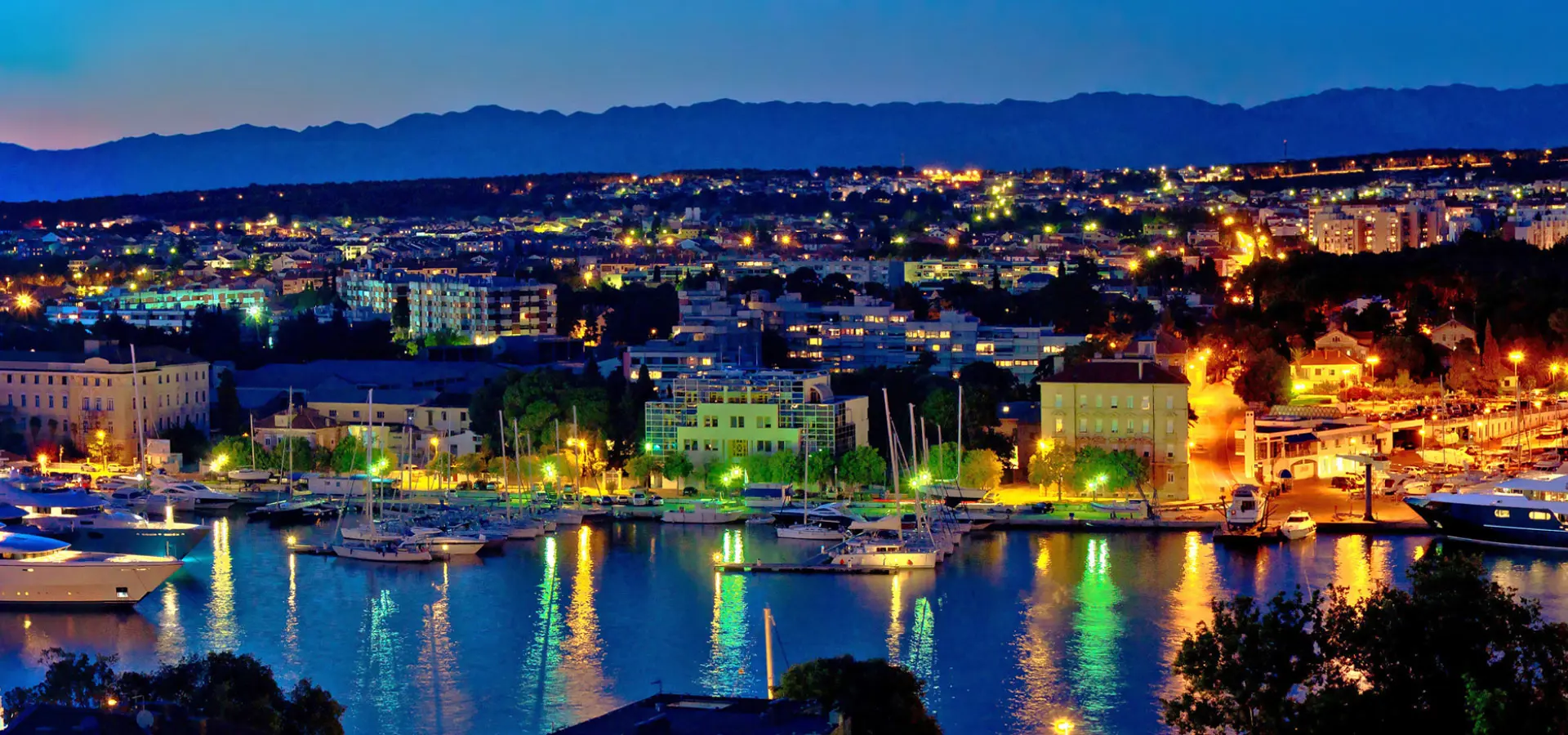
Zadar Copyright © Sisiterscom.com, Shutterstock
Zadar is a welcoming city and offers different possibilities for accommodation.
To find the ideal hotel and the best offers you can do a search for the stars but also for districts or landmarks.
STARS
Hotels for stars, differentiated by type of services:
LANDMARKS
Hotels in tourist areas
LANDMARKS
Hotels in tourist areas
AIRPORT
Hotels near the airport
WHERE TO GO in zadar
Monuments in Zadar

Five Wells Square
This striking place lies between the medieval city walls and the Renaissance Grimani bastion, where the oldest Park in Croatia is located. The 5 well-preserved wells were built at the time of the Turkish sieges during the 16th century.
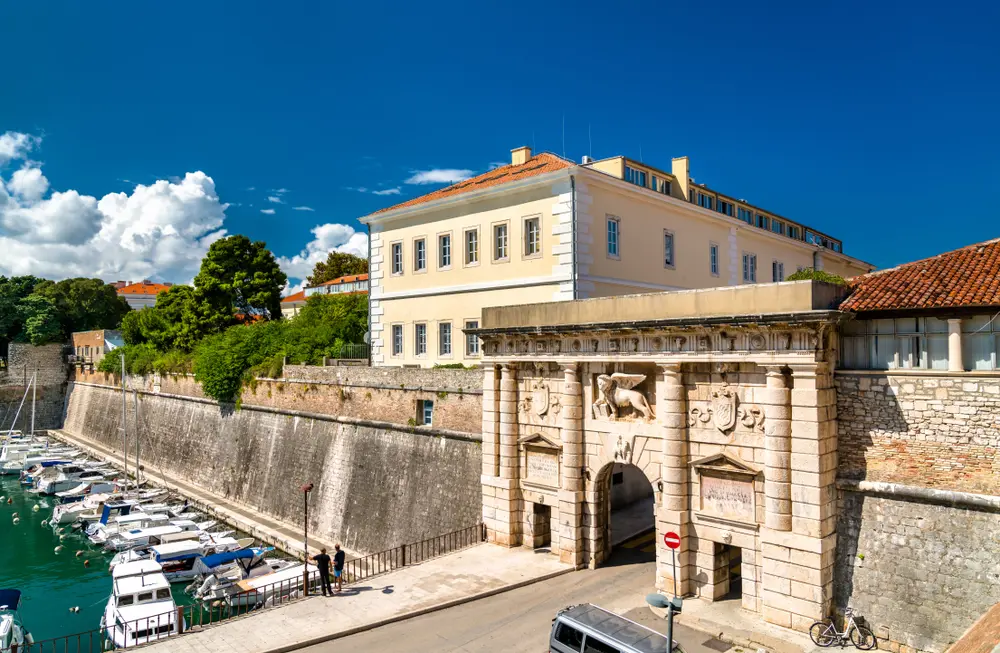
Land Gate
Built in 1543 by the Venetian architect Michele Sanmicheli, the Land Gate is considered one of the most beautiful Renaissance monuments in all of Croatia. The beautiful Triumphal Arch, the majestic central arch and the two side passages for pedestrians are sights that need to be admired.
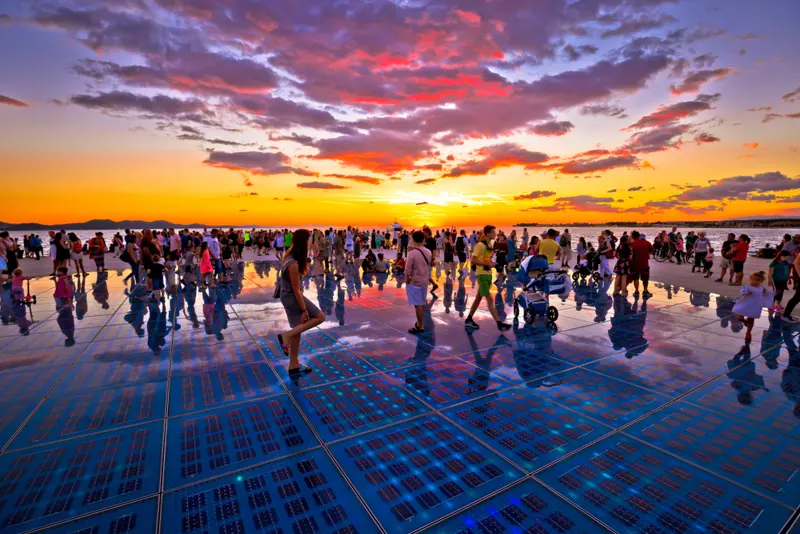
Greeting to the Sun
The work of the brilliant architect Nicola Bašić, is located near the Sea Organs and is formed by a circle of 22 meters in diameter composed of 300 panels under which solar photovoltaic modules are located that not only create a beautiful play of light by day, but postpone even in the evening fantastic bright colors.
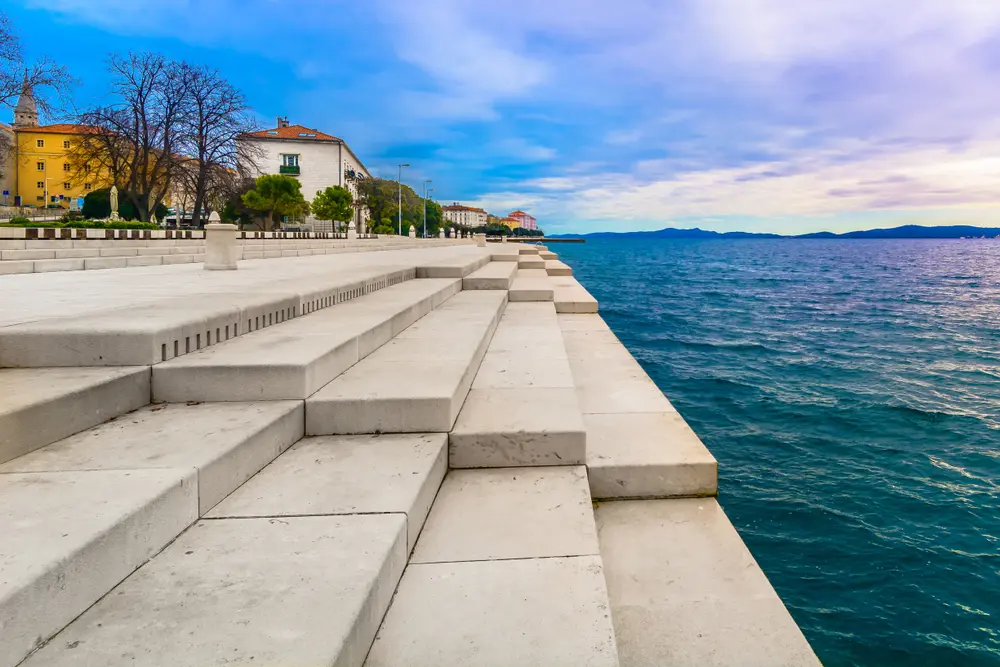
Sea Organs
Considered cultural monuments, these Sea Organs transform the waves of the sea into music. The complex is located near the new dock for cruise ships along the harbor. For the evocative building project, the Croatian architect Nicola Bašić received the European prize in 2006.
Churches of Zadar
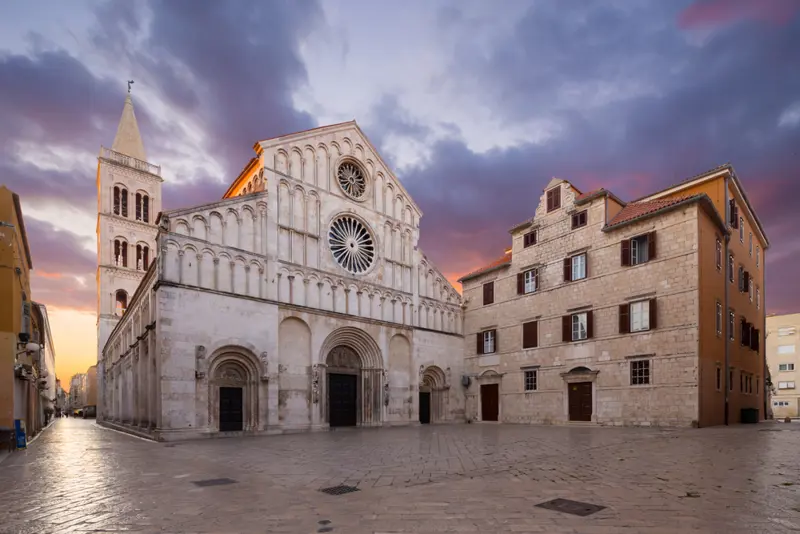
Cathedral of St. Anastasia
The Cathedral of St. Anastasia is the largest cathedral in Dalmatia, built in a beautiful pre-Romanesque style dating back to the 12th century with a façade of bright Istrian stone. Inside is the Polyptych of Zadar, an early masterpiece by Vittore Carpaccio.
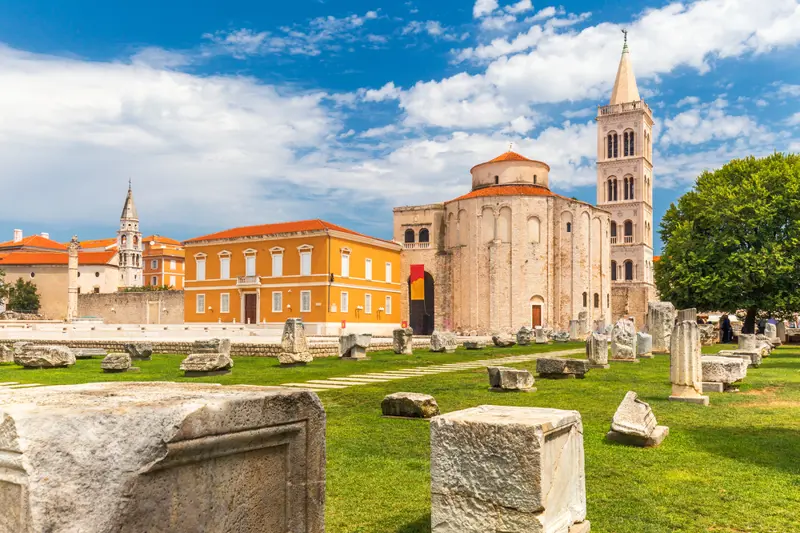
Church of St. Donatus
Dating back to the 9th century, the splendid Church of St. Donatus is the largest pre-Romanesque building in Croatia. It has a special and characteristic round shape. Today, due to its exceptional acoustics, it is used for concerts of medieval and Renaissance music.
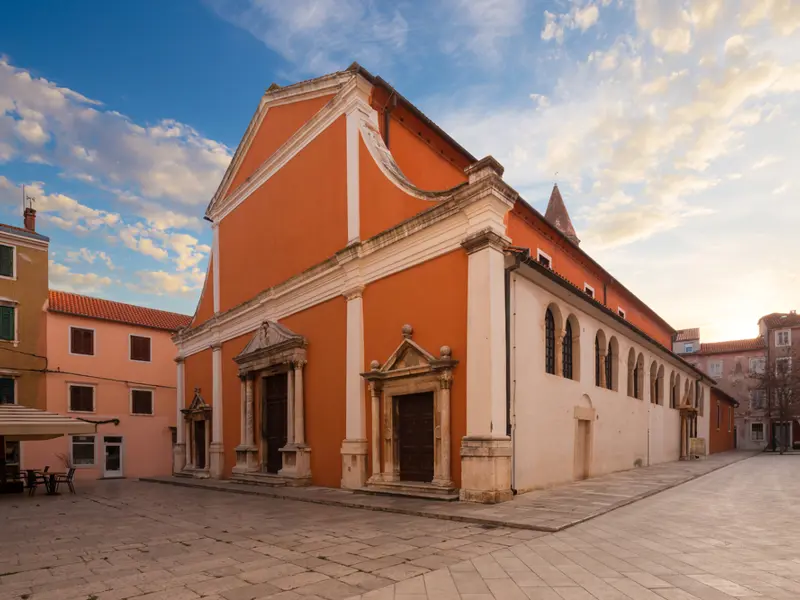
Church of St. Simeon
It is the church dedicated to the patron saint and protector of the city. Remarkable in its interior is the precious sarcophagus containing the relics of the saint, exhibited to the public from 8 October (the day of the patron's feast) for a week. Of great artistic value and realized by the Italian goldsmith Francesco da Milano, in 1380 it was donated to the Church of St. Simeon for a vote by Queen Sant’Elisabetta of Hungary.
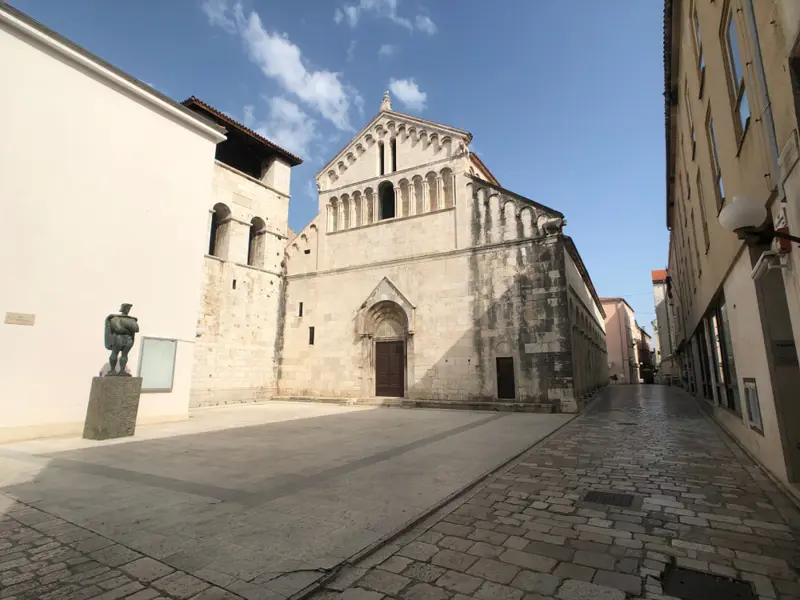
Church of St. Chrysogonus
First erected in the sixth century on the site of an ancient Roman market, the Church of St. Chrysogonus was later rebuilt in the elegant Lombard Romanesque style with its beautiful façade with reliefs and loggias. Inside, modified in Baroque style, is the valuable high altar, of the Venetian school, erected in 1632 as an ex voto for the end of the pestilence that plagued the city and its surroundings.
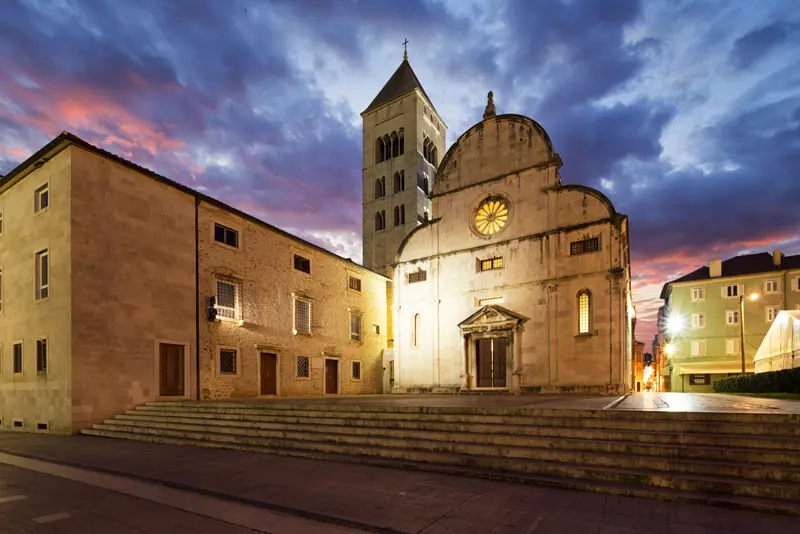
Church and the Convent of St. Mary
Annexed to the great Church of St. Mary, with three naves, is the Convent of the Benedictine Sisters, which for centuries has housed 'the gold and silver of Zadar', a valuable permanent display of sacred art, exhibited in eight rooms in a space of 1200 square meters.
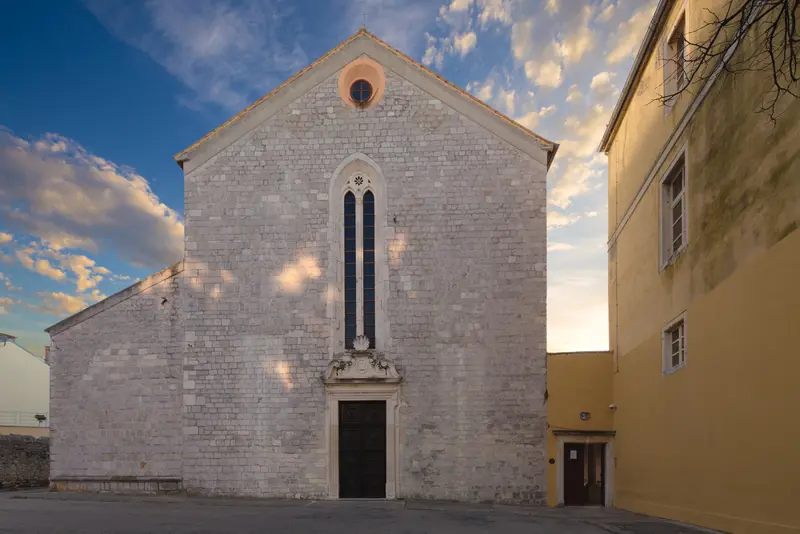
Church and Monastery of St. Francis
It is the oldest Dalmatian church built in Gothic style. Noteworthy is the the choir behind the altar, richly decorated with elements of the Gothic Flower. Of historical importance is the sacristy, where the Treaty of Peace of Zadar was signed in 1358, with which the Serenissima renounced part of Dalmatia.
Museums of Zadar
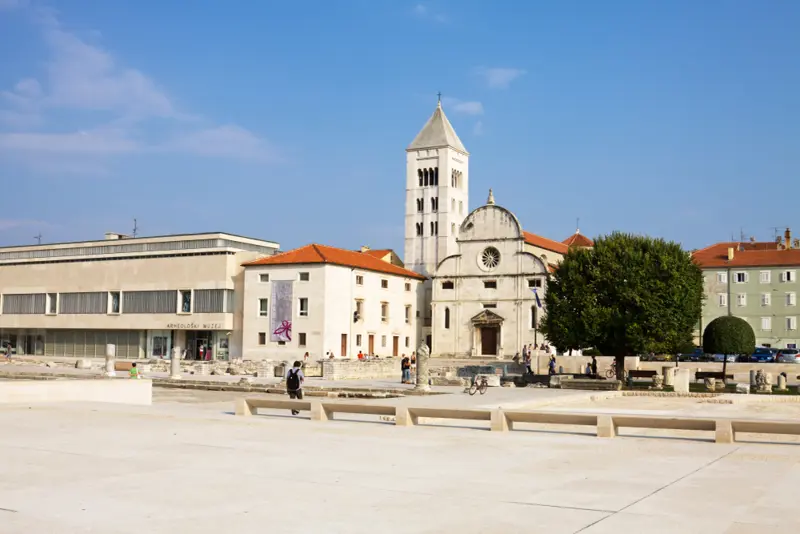
Archaeological Museum of Zadar
This museum exhibits objects and archaeological finds from the Roman, Palaeolithic, Neolithic and Metal Age, as well as objects from the city of Zadar from the 7th to the 12th century. The Archaeological Museum of Zadar is located in a building in the historic centre, near the Roman Forum, the Capitolium and the main street of Kalelarga. www.amzd.hr
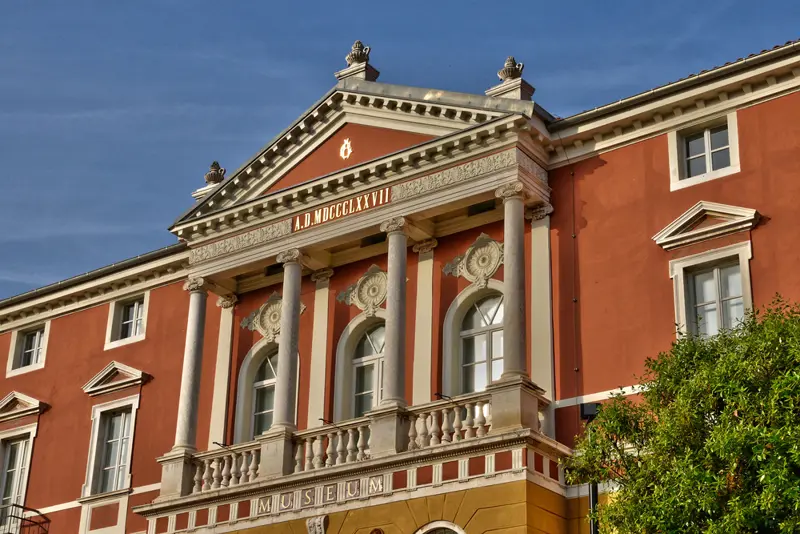
Museum of Ancient Glass
It is located inside the Cosmacendi Palace of 1877 and exhibits glass objects found in Zadar and its surroundings between the 1st century BC and the 5th century AD. In the laboratory you can admire glass processing techniques and you can also buy glass jewels in the shop at the entrance of the museum.
Partnership with GetYourGuide
Excursions & Tours in Zadar
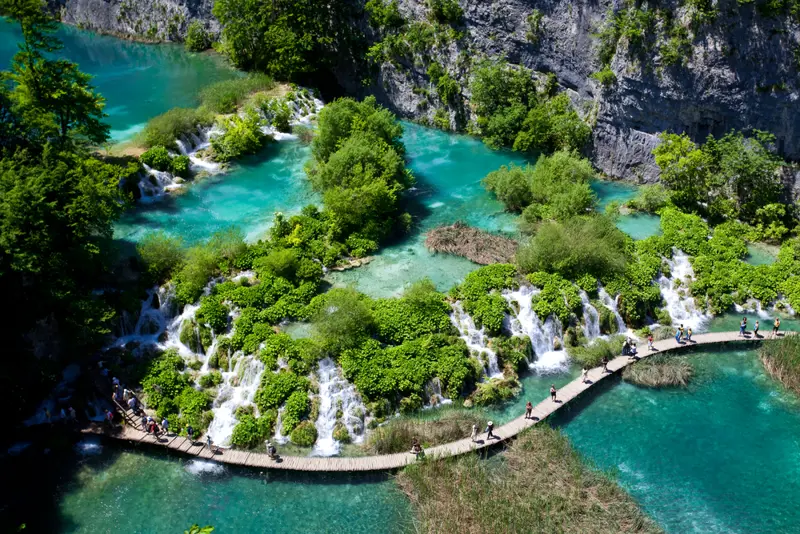
Plitvice National Park
This immense park, the largest in Croatia and a UNESCO World Heritage Site, is certainly worth a visit. With a two hours’ drive from Zadar you can find yourself in the midst of ancient trees, strolling gentle paths and admiring small waterfalls.
Plitvice National Park Tour
With a tour of Plitvice National Park you can explore the nature and the lakes with walking tour and a boat ride on Kozjak Lake. The tour includes: transport with driver, guide, walking tour, boat ride and breakfast box. Duration: 8 hours. Discover the tour
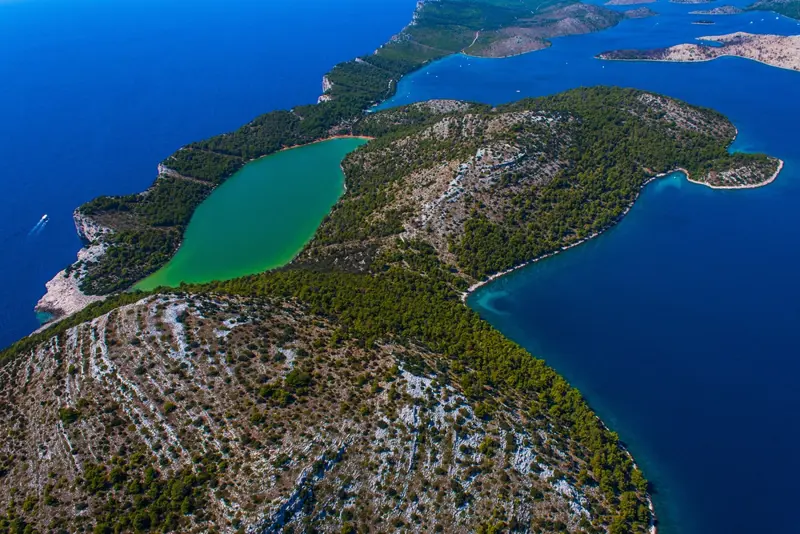
Island of Dugi Otok
This island, also called "Long Island", can be reached in about 1 hour and 30 minutes by ferry or fast hydrofoil from Zadar. Approximately 4 km long and 45 km wide, it is home to 12 small villages and an archipelago of hundreds of islands. Not to be missed: the beautiful Sakarun Beach, the "Strašna peć" cave and the Telašćica Nature Park in the south of the island.
Dugi Otok Island Tour
A private speedboat tour with professional skipper and guide is the ideal way to explore Dugi Otok Island by a full-day excursion. Stop for a swim, snorkeling and visit the village of Iž. Duration: 7 hours. Discover the tour
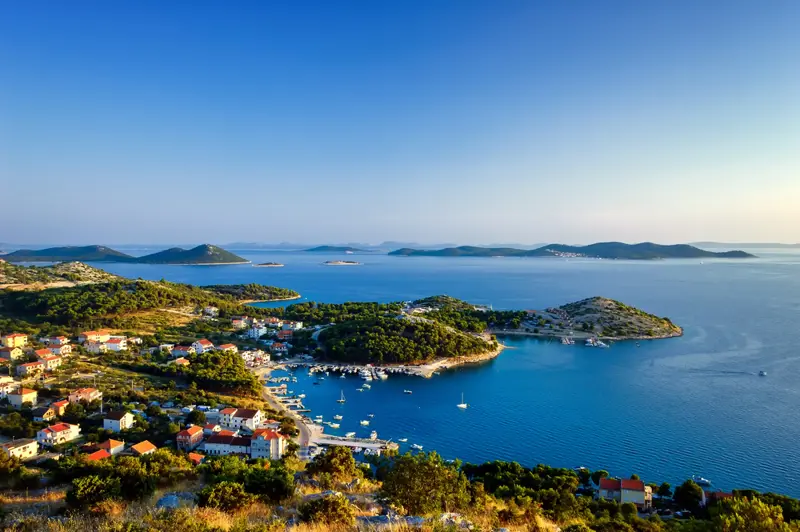
Kornati National Park Tour
Full-day boat trip from Zadar to Kornati National Park, with over 100 islands that make up the park. Along the way you'll stop twice to go swimming, tour an old village on an island and visit the Tureta fort. Enjoy breakfast, lunch and drinks onboard the boat. The tour includes: boat trip, breakfast, lunch, drinks, local guide and live commentary on board. Duration: 9 hours. Discover the tour
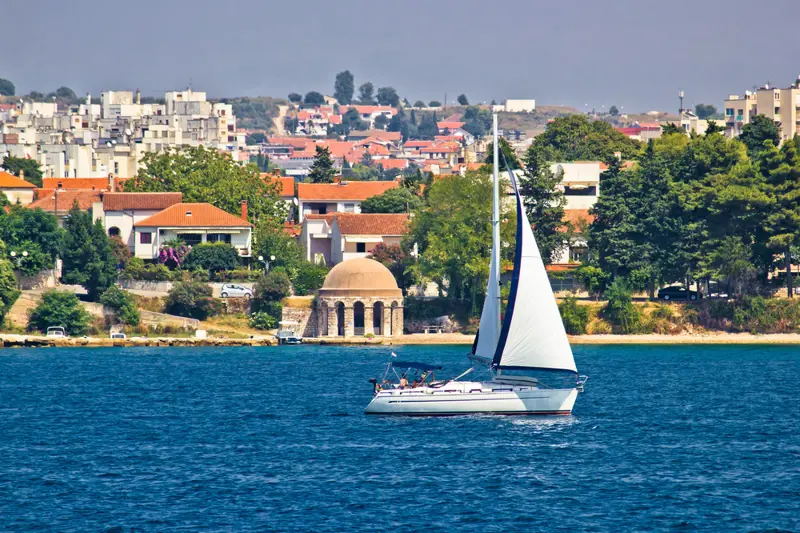
Zadar Canal sailing trip
A 4-hour sailing trip to travel around Zadar's closest islands in the Adriatic Sea. Dock in the small island village of Preko for a walk around the small port, or have a coffee in one of the beach bars, go for a swim or visit the nearby islet and green oasis of Galevac, with its 14th-century monastery. The tour includes: sailing boat with skipper, snorkeling and fishing equipment. Duration: 4 hours. Discover the tour
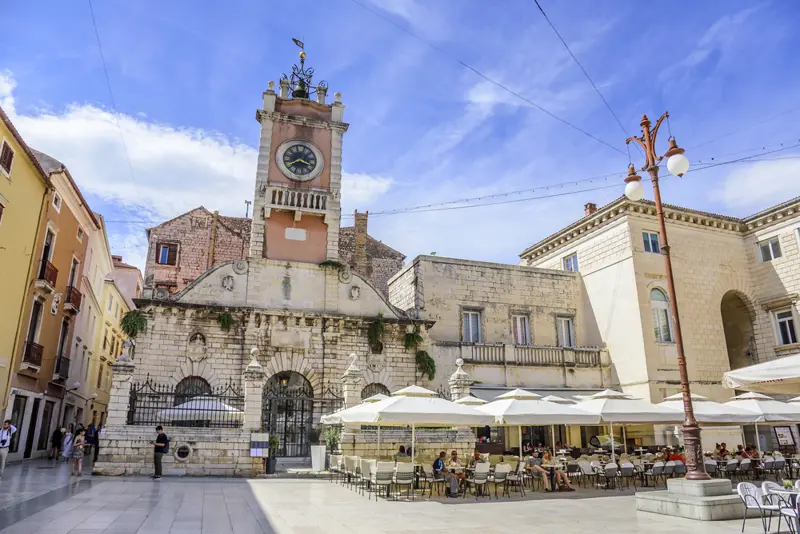
Guided walking Tour of Zadar
A journey along the streets of Zadar's old town, a UNESCO World-Heritage Site, with licensed guide to discover the Church of St. Donat, the Roman Forum, the Cathedral of St. Anastasia, the Sea Gate, the Land Gate, the City Walls, the 5 Wells Square and famous city market with products from nearby farms. The tour includes: licensed guide, Pag cheese and Maraschino liqueur tasting. Duration: 1 hour and 40 minutes. Discover the tour
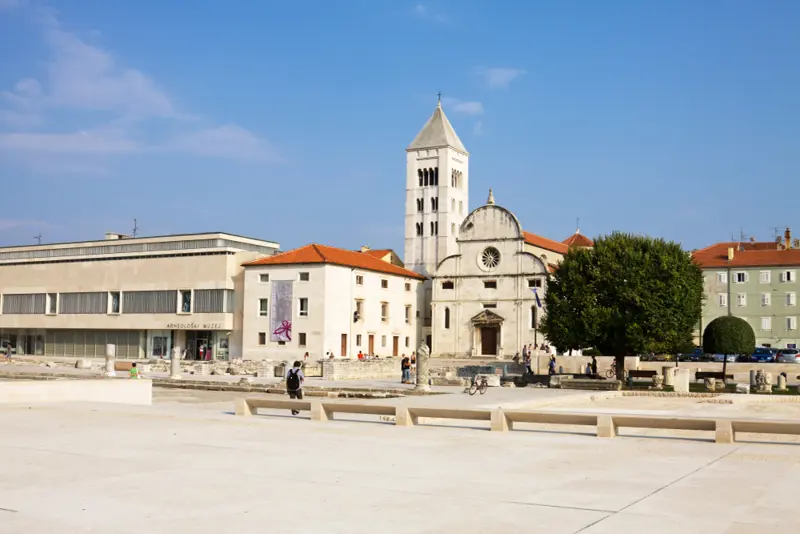
Zadar Museums Tour
Visit of two museums of Zadar with licensed guide. The Archeological Museum with its permanent exhibitions of prehistoric, Roman antiquity and Medieval collections. And the Museum of "Gold and Silver of Zadar" in the Benedictine Convent of St. Mary. You can discover the history, culture and art of Zadar and north Dalmatia. But also, the story and legends behind objects that span centuries of ancient cultures. Duration: 120 minutes. Scopri il tour
Discover all tours
You might be interested in
Other destinations
Airports nearby Zadar


